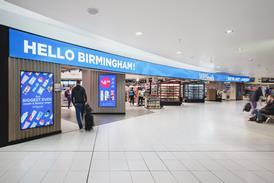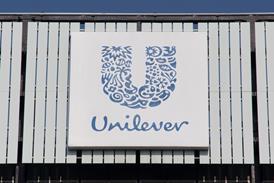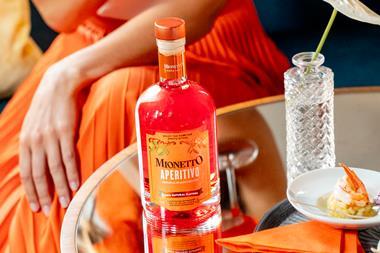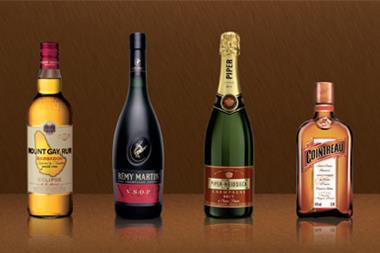In May 1996 the directors of Allied Domecq had a tough decision to make. One of its smallest brands Plymouth Gin was struggling to sell more than 3,000 cases a year in the UK and it was time to act.
The company faced two choices. It could axe the brand but lose the PR battle in Plymouth where it would be known for ever as the company which killed the local gin, or sell it off to realise some value for shareholders.
It chose the second option and sold Plymouth Gin to a three-man consortium fronted by John Murphy, the founder of branding consultancy Interbrand. "We decided to buy it because we felt the premium gin market was undervalued. It still is when you consider how many vodka variants there are in the UK today," says Murphy. "We repackaged it and began a huge PR campaign to reignite interest in a product that retailers considered to be a dead brand."
Dead it wasn't. In 2000 Swedish company Absolut bought a 50% stake in the company and this opened up international markets. This year more than 150,000 cases of Plymouth Gin will be sold around the world.
The Plymouth Gin story is an interesting and well-documented example of how much value often remains in even the smallest brand when its owners decide it no longer fits into a group's long-term plans. And it will not be the only success story. Like Allied Domecq, global companies such as Unilever, Procter & Gamble, Diageo and Nestlé are constantly reviewing their brand portfolios, which means plenty of opportunities for the venture capitalists and equity houses now sniffing round the grocery sector.
Only this week, for example, Lehman Brothers was reportedly poised to buy a clutch of Unilever personal care brands including Mentodent, Pepsodent and Close Up toothpastes, as well as Brut Cologne and Sunlight Soap, as Unilever continues its strategy of focusing on fewer brands.
It's not just those in the investment community who have spotted the opportunities. Last August, advertising industry legends Maurice and Charles Saatchi formed Saatchinvest with the sole intention of buying up brands divested by large groups. Its first purchases were Complan and Casilan from Heinz, which retains a 30% stake and continues to manufacture the products that were profitable but regarded as non-core brands.
But even when brands are no longer seen as core and are targeted for disposal, that doesn't mean they will be sold on the cheap. Specialist accountancy firms such as Brand Finance are often commissioned to produce a brand business valuation. This will take into account consumer and market research, financial measures, cashflow forecasts and include a trademark evaluation.
"We look at each brand as a business in its own right with its own factory, staff and distribution. If we are valuing 10 Unilever brands these would be assessed as 10 separate businesses," says Brand Finance chief executive David Haigh. "Companies are usually surprised by the true value of their brand and sometimes realise that poor marketing was the reason for its failing. This is the part of the grocery industry where marketing meets finance."
Lornamead specialises in buying and regenerating small brands. It bought the Dubro washing-up liquid brand from Unilever and within 18 months had sold it on at a profit to a trade buyer in Europe.
Chief executive Mike Jatania says there are few bargains to be had in the market of second hand brands because the owner is obliged to get the best value it can. He adds: "You have to be a strategic buyer and be able to make savings in areas such as operations, manufacturing, distribution or marketing. You will also have to play a period of catch-up because these brands have usually been starved of investment for years."
The likes of Lornamead needn't worry that the opportunities are about to dry up.
But as the big companies continue to focus on fewer megabrands, they too are facing up to some tricky issues, particularly when they decide to kill off, rather than sell, an established products. Sometimes this involves migrating well-loved names over to a global branding platform which is never as easy as it seems. Alternatively, products are axed and marketers are charged with the task of persuading consumers to switch to the megabrand alternative. That process is also fraught with difficulties if mishandled.
And there is always a danger that portfolio pruning can turn into a slash and burn policy, where strong local brands get ditched, or irrevocably damaged, in the pursuit of a global strategy.
Andrew Seth, who was chairman of Lever Bros between 1992 and 1995 and is now non-executive chairman of branding consultancy Added Value, accepts that taking decisions on a global basis often means a disappointing end for local brands. "Ten years ago these types of policies were applied on a country-by-country basis, but today local companies can be asked to lose brands that might actually be quite profitable," he says.
But Seth adds: "You do have to weed out the dogs in your portfolio and few brands can go on for ever. In the future there will be even more brand consolidation which should provide consumers with a more focused choice of products."
There's another reason why the disposals will continue the changing dynamics of grocery retailing. With the rise in own label there has been pressure on manufacturers to focus their efforts and budgets on the best brands. Retailers are no longer guaranteeing shelf support for brands that are numbers three or four in a category.
"Retailers do not care if manufacturers slash their brand portfolios," says Interbrand deputy chairman Tom Blackett. "For them it means less time spent talking to suppliers' reps about brands for which there is little consumer interest and promotional support. They want to be able to offer their customers choice without having a confusing category full of what are effectively identical products."
So cutting the number of brands on shop shelves makes sense for manufacturers and retailers, while consumers benefit as long as they still have choice. But there are always brands that, after years of profit thanks to the loyalty of a relatively small band of customers, simply need care and attention from a new owner to flourish again.
{{ANALYSIS }}
The company faced two choices. It could axe the brand but lose the PR battle in Plymouth where it would be known for ever as the company which killed the local gin, or sell it off to realise some value for shareholders.
It chose the second option and sold Plymouth Gin to a three-man consortium fronted by John Murphy, the founder of branding consultancy Interbrand. "We decided to buy it because we felt the premium gin market was undervalued. It still is when you consider how many vodka variants there are in the UK today," says Murphy. "We repackaged it and began a huge PR campaign to reignite interest in a product that retailers considered to be a dead brand."
Dead it wasn't. In 2000 Swedish company Absolut bought a 50% stake in the company and this opened up international markets. This year more than 150,000 cases of Plymouth Gin will be sold around the world.
The Plymouth Gin story is an interesting and well-documented example of how much value often remains in even the smallest brand when its owners decide it no longer fits into a group's long-term plans. And it will not be the only success story. Like Allied Domecq, global companies such as Unilever, Procter & Gamble, Diageo and Nestlé are constantly reviewing their brand portfolios, which means plenty of opportunities for the venture capitalists and equity houses now sniffing round the grocery sector.
Only this week, for example, Lehman Brothers was reportedly poised to buy a clutch of Unilever personal care brands including Mentodent, Pepsodent and Close Up toothpastes, as well as Brut Cologne and Sunlight Soap, as Unilever continues its strategy of focusing on fewer brands.
It's not just those in the investment community who have spotted the opportunities. Last August, advertising industry legends Maurice and Charles Saatchi formed Saatchinvest with the sole intention of buying up brands divested by large groups. Its first purchases were Complan and Casilan from Heinz, which retains a 30% stake and continues to manufacture the products that were profitable but regarded as non-core brands.
But even when brands are no longer seen as core and are targeted for disposal, that doesn't mean they will be sold on the cheap. Specialist accountancy firms such as Brand Finance are often commissioned to produce a brand business valuation. This will take into account consumer and market research, financial measures, cashflow forecasts and include a trademark evaluation.
"We look at each brand as a business in its own right with its own factory, staff and distribution. If we are valuing 10 Unilever brands these would be assessed as 10 separate businesses," says Brand Finance chief executive David Haigh. "Companies are usually surprised by the true value of their brand and sometimes realise that poor marketing was the reason for its failing. This is the part of the grocery industry where marketing meets finance."
Lornamead specialises in buying and regenerating small brands. It bought the Dubro washing-up liquid brand from Unilever and within 18 months had sold it on at a profit to a trade buyer in Europe.
Chief executive Mike Jatania says there are few bargains to be had in the market of second hand brands because the owner is obliged to get the best value it can. He adds: "You have to be a strategic buyer and be able to make savings in areas such as operations, manufacturing, distribution or marketing. You will also have to play a period of catch-up because these brands have usually been starved of investment for years."
The likes of Lornamead needn't worry that the opportunities are about to dry up.
But as the big companies continue to focus on fewer megabrands, they too are facing up to some tricky issues, particularly when they decide to kill off, rather than sell, an established products. Sometimes this involves migrating well-loved names over to a global branding platform which is never as easy as it seems. Alternatively, products are axed and marketers are charged with the task of persuading consumers to switch to the megabrand alternative. That process is also fraught with difficulties if mishandled.
And there is always a danger that portfolio pruning can turn into a slash and burn policy, where strong local brands get ditched, or irrevocably damaged, in the pursuit of a global strategy.
Andrew Seth, who was chairman of Lever Bros between 1992 and 1995 and is now non-executive chairman of branding consultancy Added Value, accepts that taking decisions on a global basis often means a disappointing end for local brands. "Ten years ago these types of policies were applied on a country-by-country basis, but today local companies can be asked to lose brands that might actually be quite profitable," he says.
But Seth adds: "You do have to weed out the dogs in your portfolio and few brands can go on for ever. In the future there will be even more brand consolidation which should provide consumers with a more focused choice of products."
There's another reason why the disposals will continue the changing dynamics of grocery retailing. With the rise in own label there has been pressure on manufacturers to focus their efforts and budgets on the best brands. Retailers are no longer guaranteeing shelf support for brands that are numbers three or four in a category.
"Retailers do not care if manufacturers slash their brand portfolios," says Interbrand deputy chairman Tom Blackett. "For them it means less time spent talking to suppliers' reps about brands for which there is little consumer interest and promotional support. They want to be able to offer their customers choice without having a confusing category full of what are effectively identical products."
So cutting the number of brands on shop shelves makes sense for manufacturers and retailers, while consumers benefit as long as they still have choice. But there are always brands that, after years of profit thanks to the loyalty of a relatively small band of customers, simply need care and attention from a new owner to flourish again.
{{ANALYSIS }}

















No comments yet